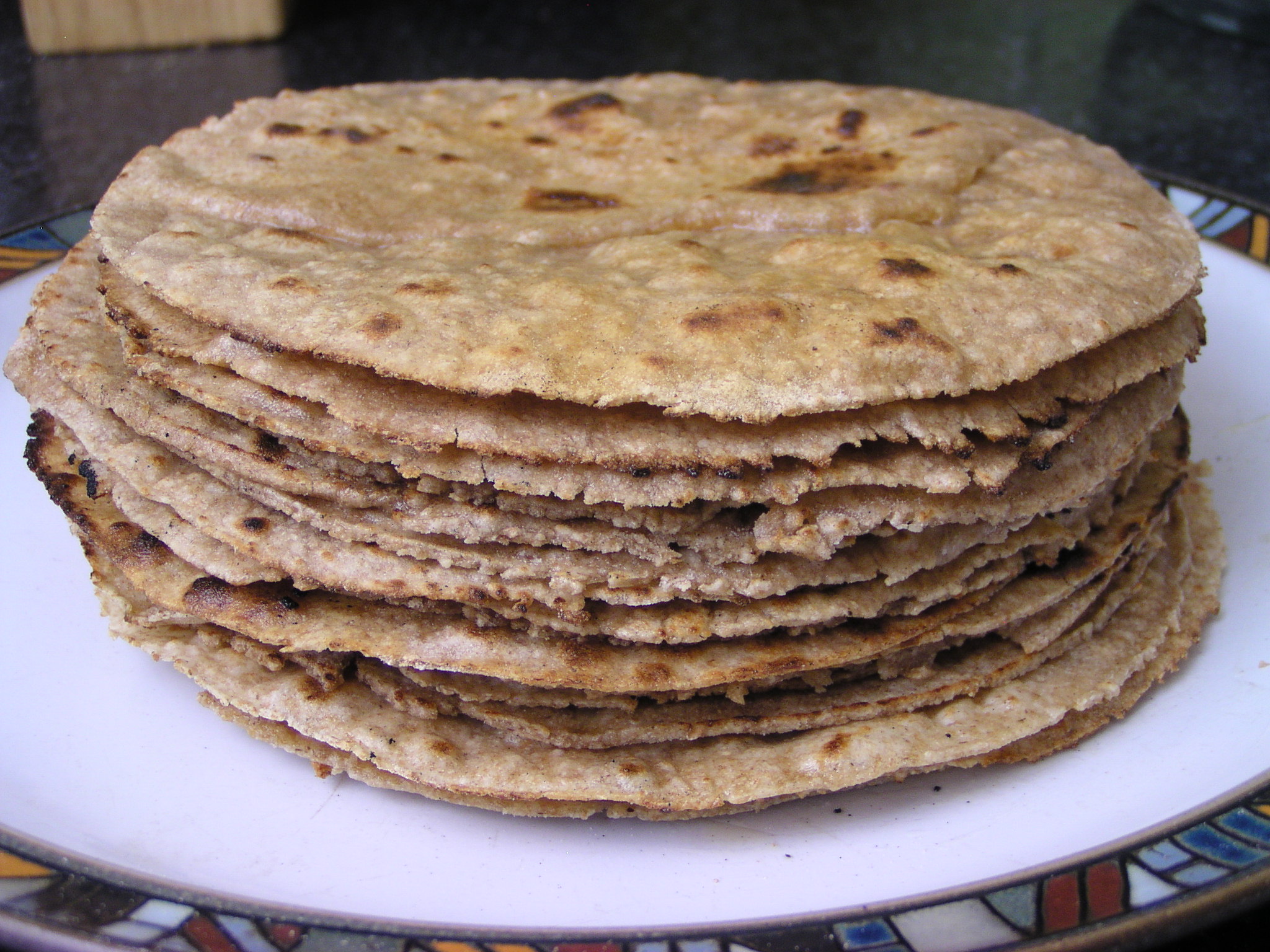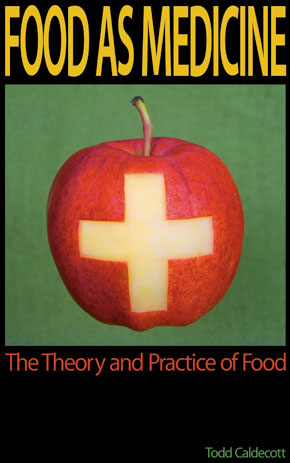There are many different types of Indian flatbread including roti (chapatti), thepla and parantha. The primary advantage of flatbread over conventional bread is that it’s easier to digest, and doesn’t have the same sticky and heavy properties as baked loaves. Roti is a plain Indian flatbread traditionally made with a stone-ground wheat flour called atta. Thepla is similar but thicker than roti, often made with different grains such as chana (chickpea) or millet, and usually includes herbs such as chopped fresh methi (fenugreek) or cilantro kneaded into the flour. A third type of Indian flatbread is parantha, which is usually stuffed with vegetables and herbs.
To make plain roti, follow these directions:
Ingredients
1 cup flour, germinated and roasted
1 cup sourdough culture (see below)
olive oil
Directions
Grind the flour to the desired consistency using a coffee grinder or a grain mill. Mix the flour and sourdough culture together, adding in a little water as required, and knead well. Place in a bowl and drizzle a little olive oil over the surface of the dough to keep it moist. Cover with a wet cloth and let sit for several hours in a warm place and let it ferment (2-18 hours). After fermentation, knead the dough again, and then break off pieces of the dough about the size of a golf ball, roll into a ball and put aside. Warm a large cast iron pan to medium heat with no oil. Sprinkle some flour onto a large flat surface such as a cutting board or a counter, and roll out each ball until it is a round, thin disc, and immediately place in the pan. Cook for approximately 1-2 minutes on each side. When golden brown, take the roti out of the pan and then place them on a hot burner very briefly until they puff up. Serves 3-4 people.
To make thepla use the same basic technique as roti, but add in the following ingredients after making the dough:
Ingredients
half cup fresh chopped methi (fenugreek)
2 tbsp sesame oil
1 tbsp sesame seeds
1 tsp ajwain seeds
1 tsp turmeric powder
½ tsp cracked black pepper
1 tsp salt
To make parantha prepare in the same manner as roti, but instead of mixing the ingredients into the flour, you are going to stuff the roti. For the filling many different vegetables can be used, including cabbage, broccoli and sweet potato, but my favorite is gobi parantha – made with cauliflower (‘gobi’).
Ingredients
1 small head of cauliflower, coarsely grated and drained
1 tsp cumin seed
1 tsp black mustard
½ tsp crushed coriander seed
½ tsp hing
½ tsp ajwain
½ tsp black pepper
½ tsp chili pepper
¼ tsp turmeric
½ tsp salt
2 tsp ghee
Directions
Grate the cauliflower (or any other vegetable), add the salt and mix well in a bowl. Let sit for 5 minutes then take a handful out at a time, squeezing out the excess liquid and put aside. Melt 1 tsp of ghee in a saucepan and roast the cumin, black mustard, coriander and ajwain for a minute until the mustard starts to pop, then add in the hing, turmeric and black pepper. Mix for a few seconds then add in the cauliflower. Stir-fry for a few minutes then put aside, half-cooked. Follow the recipe for roti: roll out each ball to about three inches in diameter, and place about 2 tbsp of filling in the middle. Make a dumpling by pulling the edges of the roti together, and then roll flat to no more than ¼ inch thickness. Parantha can also be made by rolling out two roti, laying the filling on one, covering with the second, pinching the edges closed and then rolling flat. Melt 1 tsp of ghee in a frying pan on medium-low heat, and fry each parantha on both sides until golden brown.
To Make Sourdough
Sourdough is a method to ferment flour made from whole cereal grains with naturally occurring yeasts and bacteria that deactivate antinutrient factors. To make a sourdough culture blend one cup of whole grain flour with one cup of chlorine-free water. Keep the starter in a warm place, such as in the kitchen, at temperatures between 70-80˚F/21-26˚C. After 24 hours discard half the starter and add in a half-cup flour and a half-cup purified warm water to feed the culture, and repeat again the next day. By day three this mixture will have a distinct yeasty smell, and on about day four the starter will become frothy, indicating that it is ready to use. Often a brownish alcoholic liquid (‘hooch’) will appear on the surface – this is normal – just mix it back into the starter.



Oh, man would I like to take some classes. No I would like to cook with you, spend time in the kitchen. I’m really just discovering my cook-wallah, with all the intuition and the instinct about what body and taste buds want and how things want to be handled and go together. Too bad I’m old now. I love the way you don’t make over what you do, it’s just real and right and thank god never precious. I look forward to a time. . . Morgan